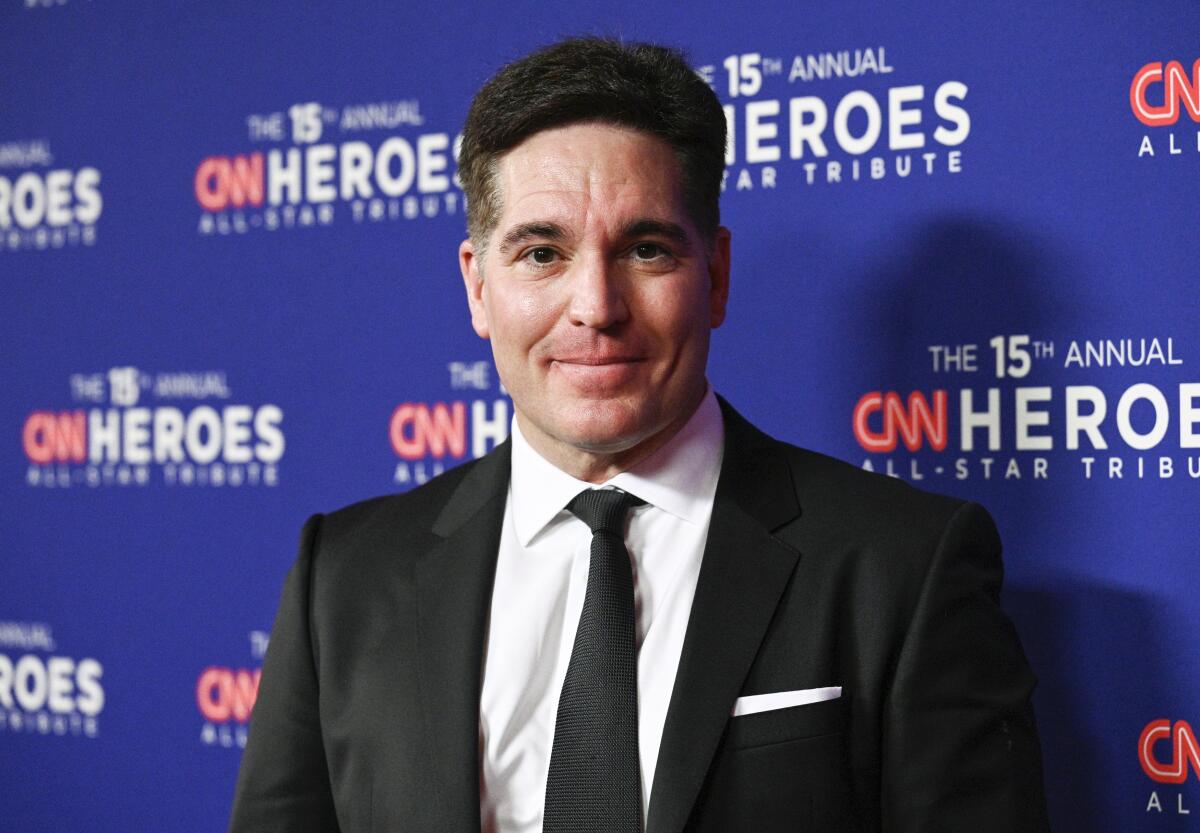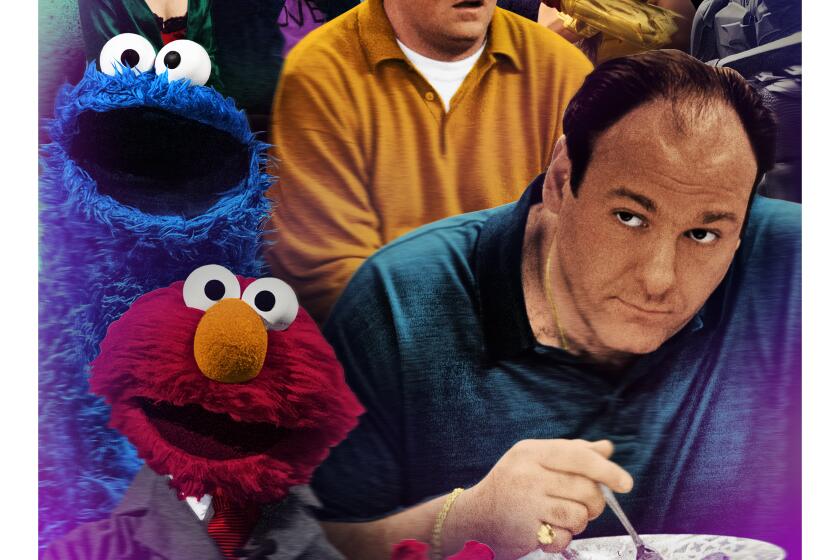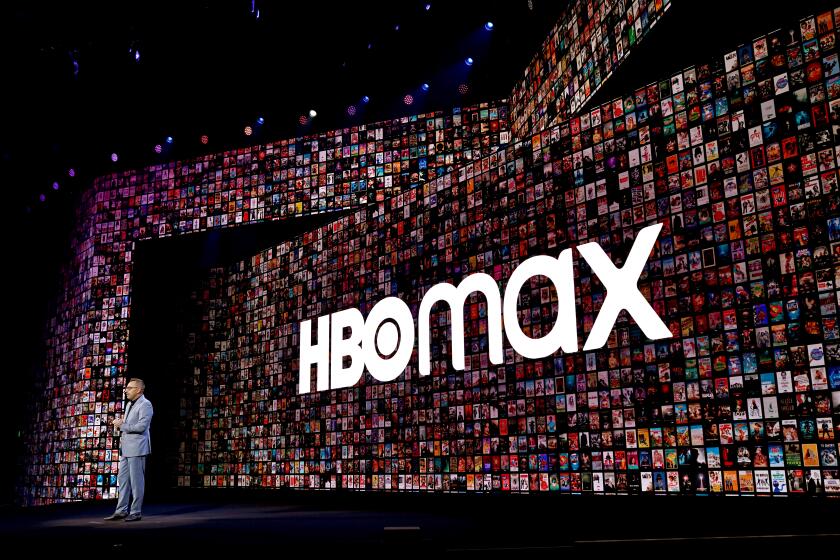After a turbulent year, WarnerMedia CEO Jason Kilar touts HBO Max gains

- Share via
Last year wasn’t exactly smooth sailing for Jason Kilar.
The WarnerMedia chief executive began 2021 facing the wrath of Hollywood as producers, stars and agents were furious over his decision to release Warner Bros. movies “day-and-date” in movie theaters as well as on the company’s fledgling streaming service, HBO Max. WarnerMedia spent months writing big checks to compensate filmmakers for potential lost profits due to the company’s abrupt change in strategy.
In May, days after being featured in a glowing Wall Street Journal profile, Kilar’s boss and AT&T Chief Executive John Stankey announced the sale of WarnerMedia to cable programming giant Discovery. AT&T’s decision to dump its entertainment holdings robbed Kilar of a long runway to make his strategy work. (The Discovery deal is under review by various regulatory agencies.) Then, in late summer, the company faced an outcry after it removed HBO Max from the Amazon channels store, which resulted in a loss of about 5 million subscribers.
“Well, it was a remarkable year ... not a quiet year,” Kilar said with a laugh in an interview Wednesday morning. “But there is no denying the results: 2021 was the year that HBO Max broke through.”
For the record:
9:23 p.m. Jan. 5, 2022An earlier version of this story incorrectly said
AT&T Chief Financial Officer Pascal Desroches announced Wednesday that HBO and HBO Max notched 73.8 million subscribers by year’s end. It was AT&T CEO John Stankey who announced the subscriber numbers.
Stankey separately announced Wednesday that HBO and HBO Max notched 73.8 million subscribers by year’s end, continuing WarnerMedia’s steady momentum to build the service amid an onslaught of competitors, including Disney+, Hulu, Paramount+, Amazon Prime Video and market leader, Netflix.
While significantly less than Disney+’s 118 million subscribers worldwide or Netflix’s 214 million customers worldwide, the HBO linear and HBO Max total marks an increase of nearly 5 million subscribers over the third-quarter numbers reported in October. It also squeaked past the company’s conservative forecasts to Wall Street of between 70 million to 73 million subscribers by Dec. 31.
During the most recent quarter, HBO Max began its European rollout with launches in Spain and the Nordics.
December marked the most-watched month in HBO Max’s 19-month history, lifted by “And Just Like That...” (the Samantha-less reboot of “Sex and the City”), which was the top series performer for the month. Viewers also embraced “The Sex Lives of College Girls” and finales of HBO hits “Succession,” Issa Rae’s “Insecure” and Larry David’s “Curb Your Enthusiasm.”
The company noted the last two movies of its day-and-date release experiment for 2021, “The Matrix Resurrections” and “King Richard,” also saw strong viewership on the service.
“We took a thoughtful risk, and some understandable heat, and yet it has worked very well,” Kilar said of WarnerMedia’s “popcorn strategy” to help stock HBO Max’s titles with theatrical movies during the pandemic when many moviegoers were reticent to watch films at the multiplex.
What is HBO Max? Video-on-demand service has HBO originals, Warner Bros. shows and movies
Although Kilar is not expected to have a role at WarnerMedia once the merger with Discovery is complete, he has made a mark on the company as it ended the year on a positive note.
HBO Max’s launch in May 2020 — during Kilar’s first month on the job — was rocky.
The COVID-19 pandemic halted film and TV series production, leaving the nascent service with scant new titles to promote. The much-hyped “Friends” reunion special was delayed. Critics lamented the service’s $14.99-a-month subscription fee, noting it was twice the price of Disney+.
There also was considerable confusion over how the HBO Max service was different from other HBO products in the market. Scores of HBO subscribers initially seemed uninterested in activating their subscriptions to include HBO Max, although that has eased over time. Complaints about glitchy technology were rampant, and the company initially found itself in a stalemate with Amazon and Roku over distribution terms.
Kilar’s background — as one of Jeff Bezos’ lieutenants who helped build Amazon in its early years and then as architect of video streaming service Hulu — reinforced his belief that consumer experiences are paramount and that building a strong technical team can be as vital to the enterprise as the programmers who select and nurture TV shows and movies.
The company has spent much of the last 18 months improving theF technology for HBO Max and ratcheting up the pandemic-delayed programming slate.
“You have to deliver hits, you have to deliver stories that matter,” Kilar said. “But, secondly, in streaming, you need to deliver a thoughtful product and technology. And you have to grow at a healthy clip across the globe.”
Analysts expect 2022 to be a pivotal year in the streaming wars as most consumers limit their budgets to two or three streaming services. Disney, for example, will face challenges achieving its forecasts of 230 million to 260 million subscribers by the end of fiscal 2024.
NBCUniversal’s Peacock and ViacomCBS’ Paramount+ must prove themselves as viable competitors to the market leaders, which now include HBO Max.
Discovery CEO David Zaslav will run the proposed new company, which would bring together some of the best-known TV channels and Warner Bros. studio.
“The cost to compete in streaming is not for the faint of heart,” media analyst Michael Nathanson wrote this week in a research report. “While content spending is needed to grow subscribers, it is also needed to support pricing increases.”
Nathanson wrote that the industry is going through “a period of consumer surplus with streaming services offering low monthly rates in order to achieve scale.”
As Nathanson noted, an average pay-TV subscriber spends about $98 a month for a linear TV bundle of channels, and streaming subscribers pay an average of $15 a month for Netflix and $7 for Disney+.
That’s where HBO Max might have an edge over some competitors in the coming year.
Because of its higher subscription price, HBO Max already generates more revenue per subscriber than its lower-priced competitors. And HBO Max’s fee is only slightly higher than Netflix’s most popular plan.
“To be able to invest in storytelling, you have to have revenue coming in,” Kilar said. “It’s not just about the number of subscribers, it’s also about the total revenue you bring in, because from that comes your investment budget.”
Kilar boasted that even though HBO Max has yet to reach its second anniversary, it is now the No. 2 service in the U.S., behind Netflix, in terms of subscribers as well as revenue.
“We are No. 2 based on revenue because we have a $14.99 product,” Kilar said. “It turns out that is the right price.”
More to Read
Inside the business of entertainment
The Wide Shot brings you news, analysis and insights on everything from streaming wars to production — and what it all means for the future.
You may occasionally receive promotional content from the Los Angeles Times.













